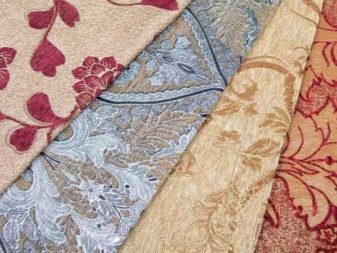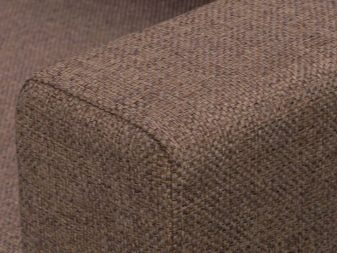Outdoor furniture fabrics overview

Modern outdoor furniture is not only strict wooden, metal and plastic structures, but also cozy sofas and armchairs in the open air. Special upholstery fabric makes it possible for such things to look beautiful for a long time without losing comfort.

general description
The main difference between fabrics for outdoor furniture and traditional fabrics is that they are not afraid of ultraviolet rays, rain, wind, or snow, almost do not absorb household pollution. Such blades have increased wear resistance.
In the manufacture of fibers for outdoor and interior fabrics, a special pigment is used that is resistant to ultraviolet radiation. As a result of this technology, the color becomes part of the thread, due to which it does not fade or wear out for a long time.
The advantages of outdoor furniture fabrics include:
- long service life;
- wear resistance;
- resistance to natural factors and mechanical damage;
- affordability of prices;
- availability of a warranty period for preservation of the original color;
- ease of maintenance.

The material does not deform, does not rot, does not collapse from temperature extremes.
With such quality characteristics, waterproof fabrics are very diverse in texture, design and prints. The waterproof fabric is visually and tactilely indistinguishable from the usual upholstery materials: it is just as soft and pleasant to the touch.
The canvases are environmentally friendly, meet safety requirements and are additionally treated with a refractory agent that does not allow open combustion.

Views
Outdoor fabrics are predominantly made from highly durable synthetic fibers. Let's list the most popular ones.
- Oxford... There are 2 types depending on the composition: polyester and nylon. The water-repellent effect of the material is created by coating the canvas with a polyurethane or polyvinyl chloride compound.
- Nylon Oxford it is characterized by increased strength, elasticity and resistance to various influences. However, this fabric does not tolerate high temperatures and ultraviolet light, after a while it begins to become electrified.
- Polyester Oxford resistant to ultraviolet light, high temperatures, but less durable.


- Acrylic fabrics with special water-repellent impregnations that increase resistance to various types of dirt... Tactilely, such canvases are almost indistinguishable from natural soft materials.
- Tapestry - a lint-free canvas with a plot or ornamental composition.
- Jacquard has a dense texture, a specific weaving method and beautiful openwork patterns. The canvas does not stretch, does not react to temperature changes, and retains its original color for a long time. The luxury of the material is in harmony with the classic interior.


- Jacquard chenille differs from ordinary jacquard in the presence of unconventional patterns or their absence. This expands the possibilities for its use in different styles.
- Scotchgard fabric - a kind of jacquard with special protection against oily dirt, dust and moisture. The disadvantage is the rather expensive fabric.
- Suede leather - the material is soft, pleasant both externally and tactilely. Has a versatile calm color palette suitable for many style projects. The disadvantage is the high price.


- Leatherette - durable and safe artificial material, has excellent decorative properties.
- Matting - coarse-woven fabric with a pronounced texture. Differs in practicality and durability.
- Flock - eco-friendly, strong, durable material, resistant to fading and moisture. Easy to clean. Disadvantages include the build-up of static electricity and wrinkling pile.
- Microvelor - a kind of flock.
- Chenille with a velvety, patterned surface.


In restaurant and hotel designs, canvases with logos, various prints are widely used: graphic objects, symbols, names of institutions.
Application
Fabrics for outdoor furniture are actively used not only in personal backyard plots, but also in public places.
They can be used to:
- furniture upholstery in street cafes;
- curtains of open terraces;
- refining seats in open cars;
- improvement of the interior of yachts and boats;
- creation of blinds, awnings, curtains of constantly open French windows;
- manufacturing of furniture structures in the pool area;
- interior decoration.


In combination with the bright colors of nature, fabrics for outdoor furniture will harmoniously fit into any surrounding landscape.








